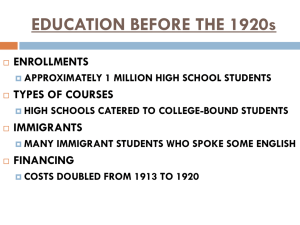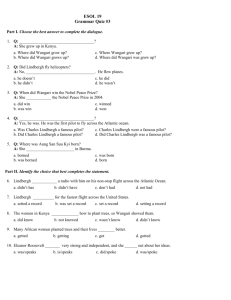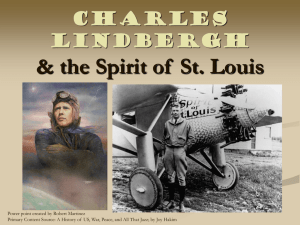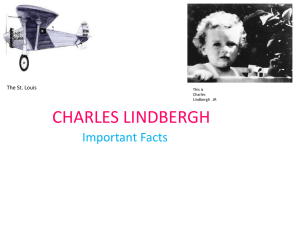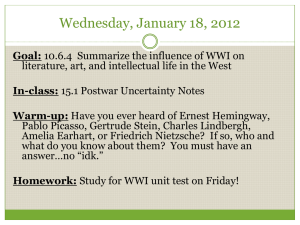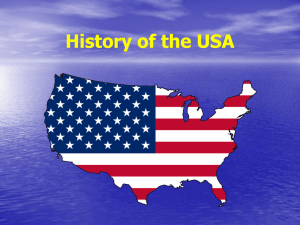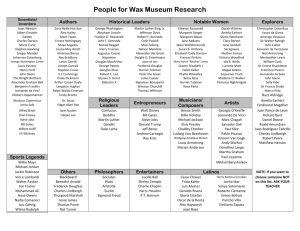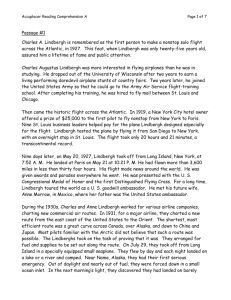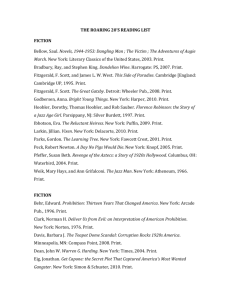Character Analysis II
advertisement
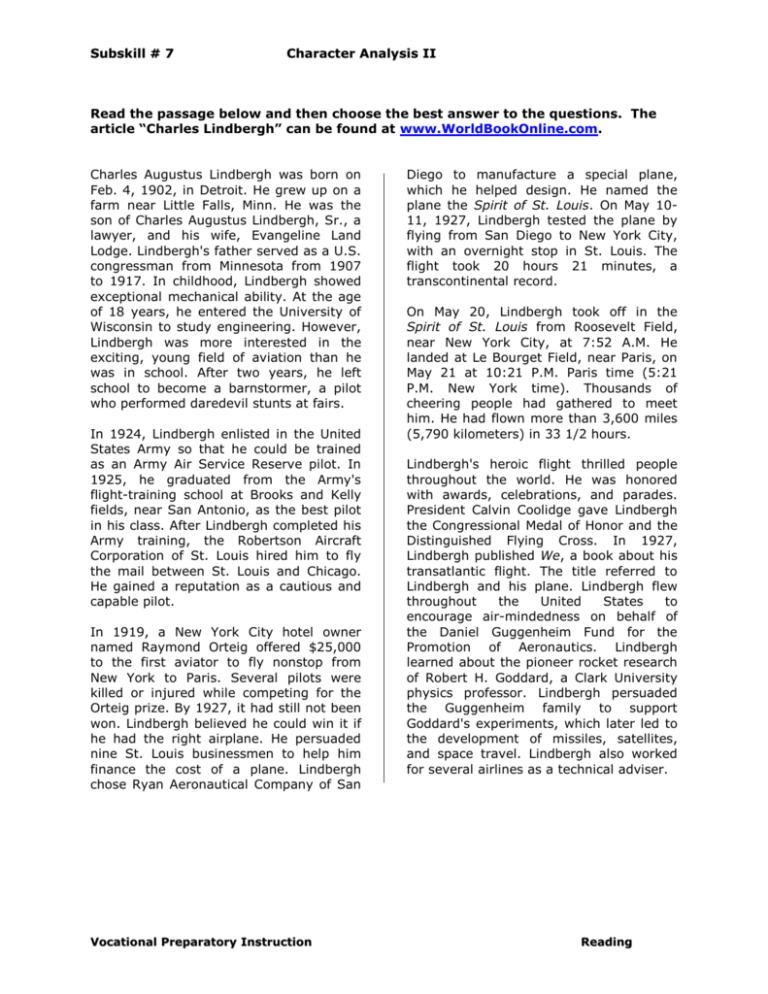
Subskill # 7 Character Analysis II Read the passage below and then choose the best answer to the questions. The article “Charles Lindbergh” can be found at www.WorldBookOnline.com. Charles Augustus Lindbergh was born on Feb. 4, 1902, in Detroit. He grew up on a farm near Little Falls, Minn. He was the son of Charles Augustus Lindbergh, Sr., a lawyer, and his wife, Evangeline Land Lodge. Lindbergh's father served as a U.S. congressman from Minnesota from 1907 to 1917. In childhood, Lindbergh showed exceptional mechanical ability. At the age of 18 years, he entered the University of Wisconsin to study engineering. However, Lindbergh was more interested in the exciting, young field of aviation than he was in school. After two years, he left school to become a barnstormer, a pilot who performed daredevil stunts at fairs. In 1924, Lindbergh enlisted in the United States Army so that he could be trained as an Army Air Service Reserve pilot. In 1925, he graduated from the Army's flight-training school at Brooks and Kelly fields, near San Antonio, as the best pilot in his class. After Lindbergh completed his Army training, the Robertson Aircraft Corporation of St. Louis hired him to fly the mail between St. Louis and Chicago. He gained a reputation as a cautious and capable pilot. In 1919, a New York City hotel owner named Raymond Orteig offered $25,000 to the first aviator to fly nonstop from New York to Paris. Several pilots were killed or injured while competing for the Orteig prize. By 1927, it had still not been won. Lindbergh believed he could win it if he had the right airplane. He persuaded nine St. Louis businessmen to help him finance the cost of a plane. Lindbergh chose Ryan Aeronautical Company of San Vocational Preparatory Instruction Diego to manufacture a special plane, which he helped design. He named the plane the Spirit of St. Louis. On May 1011, 1927, Lindbergh tested the plane by flying from San Diego to New York City, with an overnight stop in St. Louis. The flight took 20 hours 21 minutes, a transcontinental record. On May 20, Lindbergh took off in the Spirit of St. Louis from Roosevelt Field, near New York City, at 7:52 A.M. He landed at Le Bourget Field, near Paris, on May 21 at 10:21 P.M. Paris time (5:21 P.M. New York time). Thousands of cheering people had gathered to meet him. He had flown more than 3,600 miles (5,790 kilometers) in 33 1/2 hours. Lindbergh's heroic flight thrilled people throughout the world. He was honored with awards, celebrations, and parades. President Calvin Coolidge gave Lindbergh the Congressional Medal of Honor and the Distinguished Flying Cross. In 1927, Lindbergh published We, a book about his transatlantic flight. The title referred to Lindbergh and his plane. Lindbergh flew throughout the United States to encourage air-mindedness on behalf of the Daniel Guggenheim Fund for the Promotion of Aeronautics. Lindbergh learned about the pioneer rocket research of Robert H. Goddard, a Clark University physics professor. Lindbergh persuaded the Guggenheim family to support Goddard's experiments, which later led to the development of missiles, satellites, and space travel. Lindbergh also worked for several airlines as a technical adviser. Reading Subskill # 7 Character Analysis II Now choose the best answer to each question. 1. How would you best describe the type of student Charles Lindbergh was when he was studying flight? a. Acceptable b. Exceptional c. Adequate d. Suitable 2. According to the passage, what kind of pilot was Lindbergh? a. Reckless and inattentive b. Accomplished and inept c. Hasty and wary d. Vigilant and competent 3. In his later years, what did Charles Lindbergh do to occupy his time? a. Wrote books b. Tested planes c. Endeavored to further flight d. Pioneered rocket research 4. From what you read in the passage, which of these statements is not true? a. Lindbergh died in a plane crash b. Lindbergh was born on a farm c. Lindbergh was persuasive when it came to finances d. Lindbergh was a stunt flyer 5. Why were people “thrilled” with Lindbergh? a. Because he delivered their mail. b. Because he flew around the world. c. Because he was the first to fly across the Atlantic. d. Because he received the Congressional Medal of Honor. Vocational Preparatory Instruction 6. Which of these best summarizes the passage? a. Charles Lindbergh loved the Army. b. Charles Lindbergh was loved by people. c. Charles Lindbergh was engrossed in flight. d. Charles Lindbergh was a pilot. 7. Why did Lindbergh compete for the Orteig prize? a. He was extremely athletic. b. He had strong beliefs about his abilities. c. He needed the money. d. He wanted the notoriety. 8. Charles Lindbergh’s strong involvement in flying showed that he was: a. Determined to persuaded the Guggenheim family to support Goddard's experiments b. Concerned about space travel c. Distressed by the role of pilots d. Determined to advance the aeronautical field 9. What was Lindbergh’s primary occupation? a. Pilot b. Engineer c. Mechanic d. Technical adviser Reading Subskill # 7 Character Analysis II 10. Which of these statements is not true concerning Charles Lindbergh? a. Lindbergh’s flight was considered “heroic.” b. Lindbergh was a barnstormer c. Lindbergh continued his education after high school d. He was the sole designer of the Spirit of St. Louis. Vocational Preparatory Instruction Reading Subskill # 7 Character Analysis II Answer key 1. B 2. D 3. C 4. A 5. C 6. C 7. B 8. D 9. A 10. D Vocational Preparatory Instruction Reading
